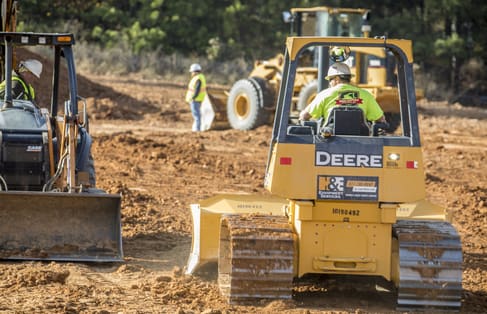The Occupational Safety and Health Administration (OSHA) has a comprehensive set of guidelines for construction companies to follow. OSHA guidelines are in place to protect construction workers. Violating them can cost a lot of money, or worse, employees and co-workers. Here are a few things you can do to make sure you, and those you work with, remain compliant.
Be aware of OSHA regulations
Complying with OSHA construction guidelines is a lot easier to do when you’re aware of them. Reading up on OSHA standards is the best way to learn them, and the OSHA website is a great resource for any questions you may have during your construction career. When in doubt about the OSHA compliance of a task or technique, it’s always good to check with OSHA.
Keep an eye on updates
Just as important as learning the OSHA construction guidelines is staying up to date on any changes. They may require you or, in the case of business owners, your employees to receive more training. For example, OSHA recently required that all the operators of mobile cranes used in construction be certified through an accredited organization, such as the National Commission for the Certification of Crane Operators (NCCO).
Train employees to be OSHA compliant
Regardless of your role within the heavy equipment operation industry, continuous training is a regular part of the job. Regular training sessions help make the construction site a safer place by teaching operators new skills to maintain OSHA compliance and refreshing existing skills.
Having everyone on the same page is key to prevent harmful construction accidents. It also helps to hire people who have already completed the necessary training that makes them OSHA compliant.

Prioritize safety at the job site
Being compliant with OSHA’s guidelines on paper and practicing compliance of the guidelines are two different things. You can only build a construction site culture that emphasizes safety if everyone works together.
There are many ways to show that you value safety on the job, such as wearing the right personal protective equipment, like work boots, protective eyewear and hard hats. Hard hats, per OSHA guidelines, are required to be worn at all times at a construction site.
Always conduct a thorough inspection before using heavy equipment. Inspect the job site too. If the weather conditions make it dangerous to work, the safest action to take is to not work that day.
Learn the right way the first time
The best way to set yourself up to be OSHA compliant in construction workplace guidelines is to learn heavy equipment operation techniques the right way in heavy equipment school. The skills you learn in a heavy equipment operator safety and training program will be the foundation on which you build your career and any further training.
Heavy equipment operators never stop learning, especially as regulations continue to change. Set yourself up for a successful career by learning safety and operation techniques at a school that knows what it’s doing, like Heavy Equipment Colleges of America.

Safety first at HEC
At Heavy Equipment Colleges of America (HEC), you can learn the essentials of heavy equipment operation, including lattice boom and mobile crane operation. We pride ourselves on providing practical heavy equipment education (especially safety) tailored to your needs as a student.
With more than a decade of experience in training heavy equipment operators, HEC uses a balance of textbook and hands-on learning. Our comprehensive three-week programs are taught by instructors who have real-world experience. They are dedicated to preparing you for entry-level heavy equipment operator jobs.
Additionally, our campuses are approved testing sites for the NCCCO. You can test to earn your certification at the same place you learned crane operation if you choose to go that route.
To learn more about HEC’s programs schedule a tour of the campus nearest you, visit Heavyequipmentcollege.com or call us at 888-414-0285.

